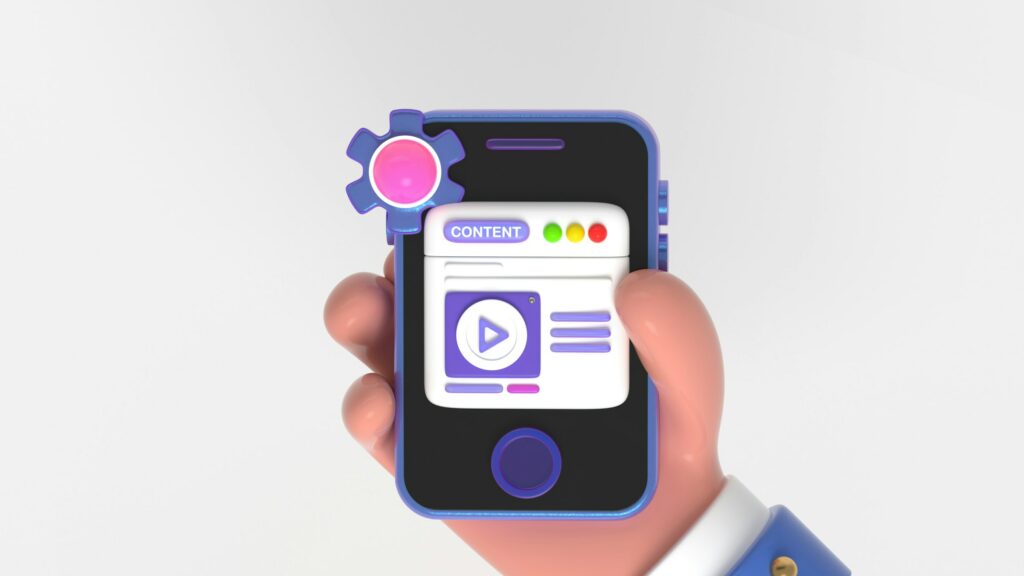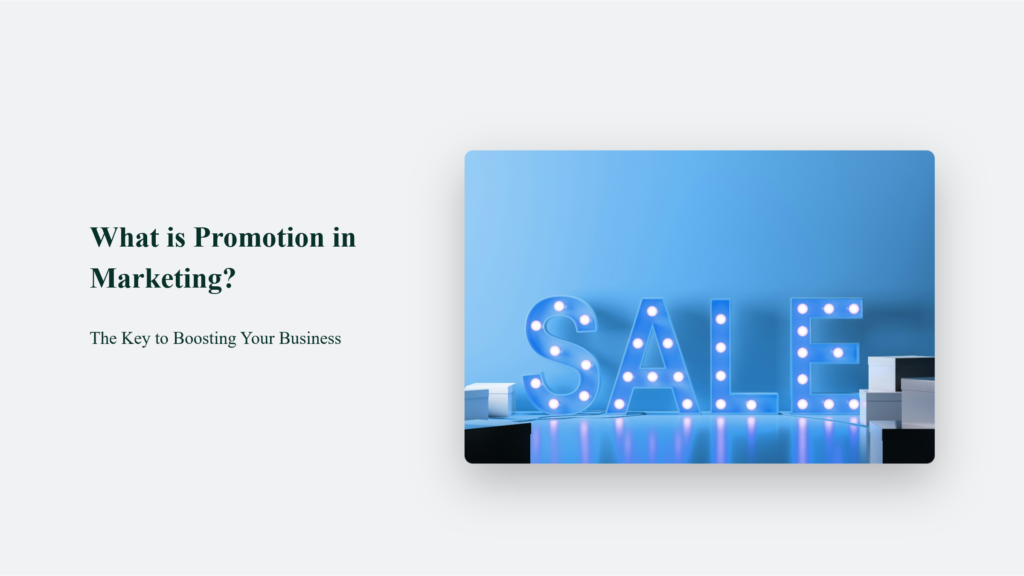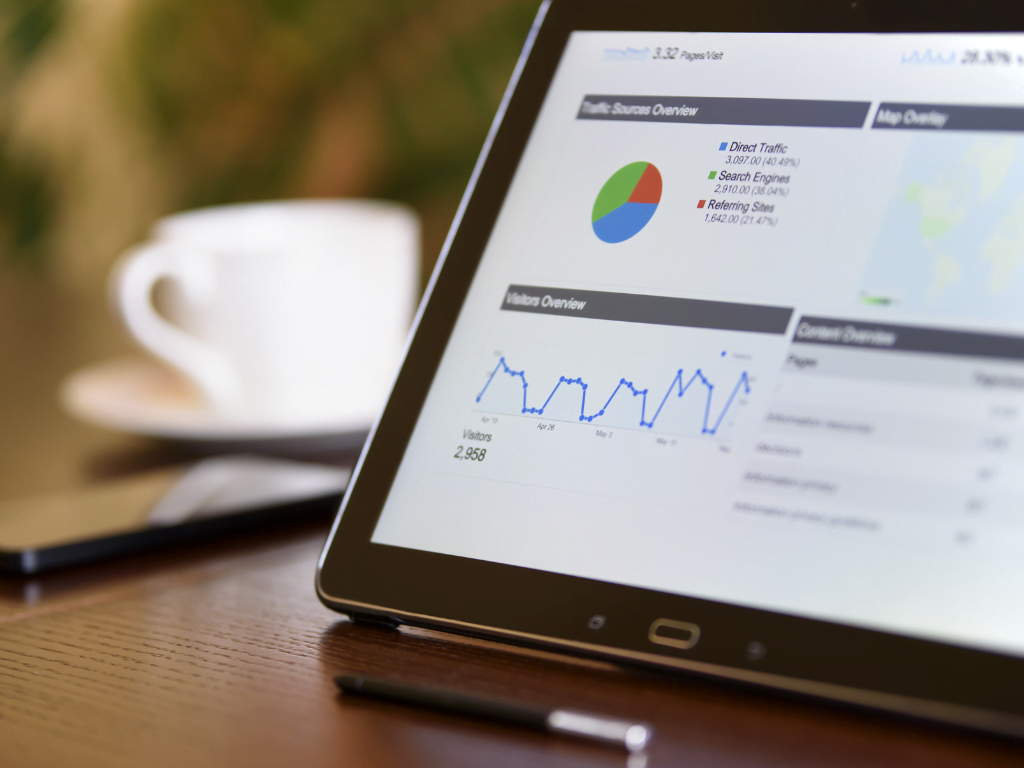

What is Promotion in Marketing? The Key to Boosting Your Business

As Seen On
In marketing, promotion is a crucial element that can make or break your business. It’s the driving force behind getting your products or services noticed by potential customers and convincing them to take action.
Well let’s find out, what is promotion in marketing?
Whether it’s through direct marketing, promotional marketing campaigns, sales promotions, or various other promotional marketing strategies, the goal is always to increase brand awareness, attract new customers, and ultimately boost sales and revenue.

What is Promotion in Marketing: Unlocking Your Business Potential
Imagine you’ve created an incredible product or service that could revolutionize your industry. You’ve poured your heart and soul into its development, ensuring it’s of the highest quality. But here’s the harsh reality: if no one knows about your offering, it’s all for nothing. This is where promotion comes into play.
Promotion is the art of communicating the value of your product or service to your target audience. It’s about crafting compelling messages that resonate with their needs, desires, and pain points. Through effective promotion marketing, you can:
- Increase brand awareness and recognition.
- Attract new and potential customers.
- Boost sales, generate interest, and drive revenue growth.
- Establish a competitive edge in your market.
- Foster customer loyalty and encourage repeat purchases
Real-World Examples of Successful Promotion
To grasp the true impact of promotion, let’s look at some real-world examples of businesses that have nailed their promotional marketing strategies:
- Apple: Apple’s iconic “Get a Mac” campaign, featuring the personified Mac and PC characters, successfully highlighted the benefits of using a Mac over a PC. The clever and humorous ads went viral, solidifying Apple’s position as a trendsetter in the tech industry and increasing brand recognition.
- Old Spice: Old Spice’s “The Man Your Man Could Smell Like” campaign took the internet by storm. The hilarious and memorable ads featuring Isaiah Mustafa transformed the brand’s image from a dated deodorant to a must-have for younger generations, boosting sales and brand loyalty.
The Four Pillars of Promotion: A Comprehensive Approach
To create a well-rounded promotional strategy, marketers often rely on the four pillars of the promotion mix, also known as the marketing mix. These pillars include:
- Advertising: Paid, non-personal communication through various media channels and marketing channels, such as television, radio, print, and digital platforms, to inform customers about your product or service.
- Personal Selling: Direct, one-on-one communication between the brand’s representatives and potential customers to persuade them to make a purchase, unlike more general advertising.
- Sales Promotion: Short-term incentives, such as discounts, coupons, free samples, or contests, encourage immediate purchases and generate sales.
- Public Relations: Managing the spread of information between an organization and the public to maintain a positive brand image, increase brand visibility, and mitigate negative publicity through press releases and other means.
Businesses can create powerful and effective promotional marketing campaigns that drive customer engagement and achieve business goals by strategically combining these promotional elements.
Key Statistics and Data
According to a study by Nielsen, 92% of consumers trust recommendations from friends and family over any other type of advertising, highlighting the importance of referral marketing.
Crafting Your Promotional Marketing Plan: A Step-by-Step Guide
Now that you understand the importance of promotion and its various components, it’s time to create your own promotional marketing plan. Follow these steps to get started:
- Define your target audience: Identify the people most likely to benefit from your product or service.
- Set clear objectives: Determine what you want to achieve through your promotional efforts, whether it’s increasing brand awareness, generating leads, or boosting sales.
- Choose the right marketing channels: Select the promotional channels that align with your target audience and objectives, such as social media platforms, email marketing, influencer marketing, or SMS marketing.
- Create compelling content: Develop engaging and informative promotional messages that showcase the value of your offering and resonate with your audience.
- Monitor and adjust: Continuously track the performance of your promotional campaigns using customer data and make data-driven decisions to optimize your promotional marketing strategy.
Key Takeaway: Promotion is the Catalyst for Business Growth
In the highly competitive marketing world, promotion is not just an option—it’s a necessity. By leveraging the power of promotion marketing, you can propel your business to new heights, attract a loyal customer base, increase sales, and establish yourself as a leader in your industry. Remember, it’s not just about having a great product or service; it’s about making sure the world knows about it through effective promotional marketing strategies.
Frequently Asked Questions:
What is the difference between marketing and promotion? Marketing
Marketing encompasses all activities involved in getting a product or service from the company to the customer, while promotion specifically focuses on communicating the value of the offering to the target audience through various marketing channels.
How much should I budget for promotional activities?
The amount you allocate to promotion will depend on various factors, such as your industry, target audience, and overall marketing goals. As a general rule, businesses typically spend between 5-15% of their revenue on marketing and promotional efforts.
What are some low-cost promotional strategies for small businesses?
Small businesses can leverage cost-effective promotional strategies such as social media marketing, email marketing, content marketing, referral marketing, and local partnerships to reach their target audience without breaking the bank.
Konger
Up until working with Casey, we had only had poor to mediocre experiences outsourcing work to agencies. Casey & the team at CJ&CO are the exception to the rule.
Communication was beyond great, his understanding of our vision was phenomenal, and instead of needing babysitting like the other agencies we worked with, he was not only completely dependable but also gave us sound suggestions on how to get better results, at the risk of us not needing him for the initial job we requested (absolute gem).
This has truly been the first time we worked with someone outside of our business that quickly grasped our vision, and that I could completely forget about and would still deliver above expectations.
I honestly can't wait to work in many more projects together!
Disclaimer
*The information this blog provides is for general informational purposes only and is not intended as financial or professional advice. The information may not reflect current developments and may be changed or updated without notice. Any opinions expressed on this blog are the author’s own and do not necessarily reflect the views of the author’s employer or any other organization. You should not act or rely on any information contained in this blog without first seeking the advice of a professional. No representation or warranty, express or implied, is made as to the accuracy or completeness of the information contained in this blog. The author and affiliated parties assume no liability for any errors or omissions.

